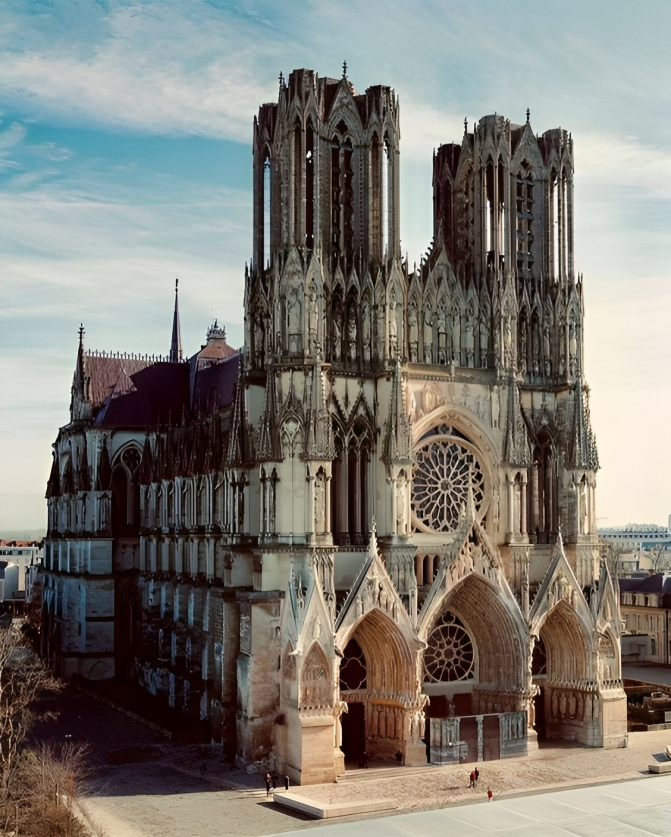Much can be learned about life in the distant past by examining the remains of people who lived during the time period in question. Scholars and researchers now have a new piece of evidence to study and unravel after a sealed, intact, 1800-year-old stone sarcophagus was unearthed.
The amazing discovery was made in September 2023 by a group of archaeologists doing an excavation in an ancient, Roman-era necropolis in France. What was a Roman necropolis doing in France and what hidden secrets could be revealed by peering into this incredible sarcophagus?
The Roman Empire’s Widespread Influence
The Roman Empire, one of the most powerful and influential civilizations in world history, is generally said to have been established when Gaius Octavius became the first Roman Emperor in 27 BCE. The Roman Empire split into two divisions, a Western and Eastern division in 285 CE.

In 476 CE, the western division of the Roman Empire fell. The eastern division, which became known as the Byzantine Empire, flourished for another thousand years. The last remnants of the Roman Empire died with the fall of Constantinople, the center of the Byzantine Empire, in 1453 CE.
A Vast and Varied Empire
At its height, the Roman Empire was spread across a vast area, with territories on three continents – Europe, Asia, and Africa. In Europe, the Roman Empire included all of modern-day Italy, as well as what is now France, Spain, and England. Parts of Germany and Austria also fell under Roman rule.

Wherever the Roman Empire spread, it left its mark on the local culture. Art, architecture, law, politics, military strategy, and engineering bearing the influence of the Roman Empire can be seen across Europe …. including France.
The Diverse History of Reims. France
Reims. France, where the ancient stone sarcophagus was found, has a long and diverse history. The city was founded in the 4th century BC by the Gauls, but by the 2nd century BC, it was under the control of the Romans and had a new name – Durocortorum.

Durocortorum became one of the largest and most important cities in the Roman Empire. It was a center for trade and commerce, a military outpost, and a thriving cultural center. The Romans fortified the city with a large stone wall. One of the most famous Gothic cathedrals in France, Notre-Dame de Reims, was built there in 1211 and served as the coronation site for several French kings.
An Ancient Necropolis
Although Reims is located in the northeastern part of France, far from Rome, the Romans built several uniquely Roman features in the city, including a public bath and a necropolis. In fact, the necropolis at Reims was quite large, covering an area of about 13,000 square feet.

For the Ancient Romans, a necropolis – which translates to “city of the dead” – was more than a simple cemetery. The final resting place for the dearly departed, a necropolis often included a variety of burial types and structures, including tombs, mausoleums, funerary monuments, and sarcophagi, to reflect different burial rituals and practices.
Reims: Home to Several Burial Sites
Several different burial sites, dating back to Roman occupation, have been found in Reims and the surrounding area. For archaeologists, these cemeteries provide a veritable treasure trove of information that can help them piece together the ancient culture and discover how people lived and died in the past.

So far, archaeologists have unearthed more than 5,000 graves in Reims. The skeletal remains can tell scholars what the ancient people ate, what illnesses befell them, and – with the help of DNA analysis – their heritage and ethnicity. Oftentimes, artifacts buried with them also provide clues to the past.
Tomb Raiders in Ancient France
Sadly, those artifacts that were buried with the dead invited tomb raiders to the necropolis. Graves were looted, valuables were stolen, and the burial sites were vandalized by various tomb raiders over the centuries.

During World War I, nicknamed the “war of the trenches,” many cemeteries and burial sites in France were destroyed to make room for the construction of trenches for soldiers. In both World War I and World War II, intense bombing also destroyed these ancient sites. That’s what makes the discovery of the sealed sarcophagus in September so remarkable.
A One-of-a-Kind Find
According to an announcement by the French National Institute of Preventive Archaeological Research, a team of archaeologists excavating an ancient necropolis discovered outside the Roman-built walls of Reims made a remarkable, one-of-a-kind discovery … an unopened, unlooted, Roman-era stone sarcophagus from the 2nd century AD.

The sarcophagus is made of limestone. It has a thick, heavy lid weighing an estimated 1,700 pounds that was sealed to the sarcophagus box using eight iron pins. Since the pins were intact, that meant the sarcophagus had not fallen victim to tomb raiders, making it the only intact tomb to be found in the Reims area.
A Peek Inside
According to Agnes Balmelle, assistant scientific and technical director at the French National Institute of Preventive Archaeological Research, the first thing that the research team did was to X-ray the rough limestone sarcophagus. Next, they inserted an endoscopic camera which allowed them to peek inside.

As expected, what they saw inside the stone sarcophagus was the skeletal remains of its occupant, along with various objects it was buried with. The skeleton takes up most of the rectangular tomb, which is about 5 feet, 3 inches in length.
A Wealthy Woman of Reims
The researchers have concluded that the skeleton belonged to a woman, and they estimate that she was about 40 years old when she died. Her interment in a stone sarcophagus was the first clue that she was a woman of wealth. The items buried with her were additional evidence.

Alongside the skeleton, archaeologists found four oil lamps. In addition, the tomb held two vials made of glass that, the researchers surmise, held scented oils. Other items buried with the woman included a comb, a small mirror, and a beautiful amber ring. All of these items, they contend, point to her being a woman of high social status.
Gleaning Secrets from the Ancient Sarcophagus
As part of their ongoing research, the archaeologists extracted a bone sample from the woman in the sarcophagus, which they are having DNA tested. The team of scientists have, in fact, DNA tested all the human remains they have unearthed in the necropolis.

Armed with the DNA results, the archaeologists hope to get a clear picture of the make-up of people living in Reims during the Roman Era. This would help them discover if the people buried there were all locals or if they came from other regions. Was the wealthy woman in the sarcophagus a member of the foreign elite living in Reims? What was her nationality or ethnicity?
The Paradox of the Skeleton
The research team also took a few samples from the bones and the bottom of the limestone box. An analysis of these samples could provide information about the woman’s medical history, diet, and general health. This data seemed to show that she had not suffered from any nutritional deficiencies … another clue to indicate her wealth and importance.

Yet an examination of her entire skeleton painted a different picture. Her bones bore signs of damage and the presence of osteoarthritis was obvious. For a woman of her age … about 40 … to have this kind of damage to her bones, she must have engaged in ongoing hard work with repetitive motions. This is not typical of a lady of leisure. Truly, the woman in the sarcophagus is a mystery.






